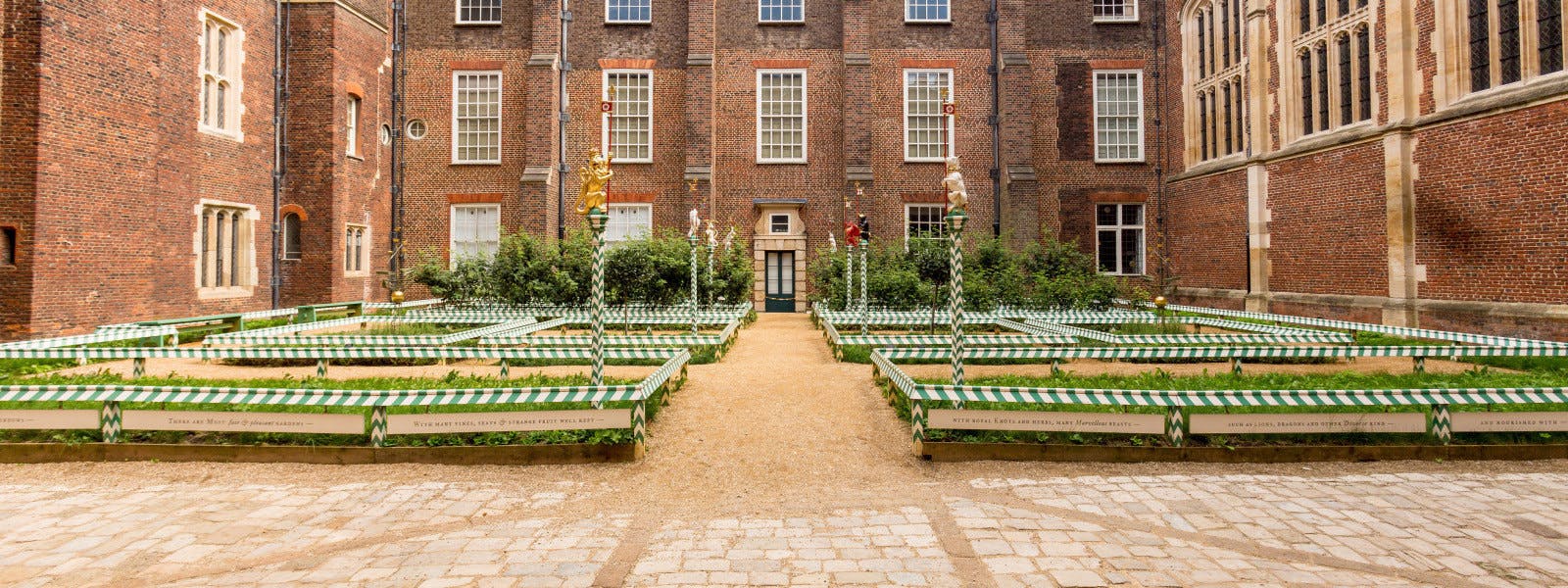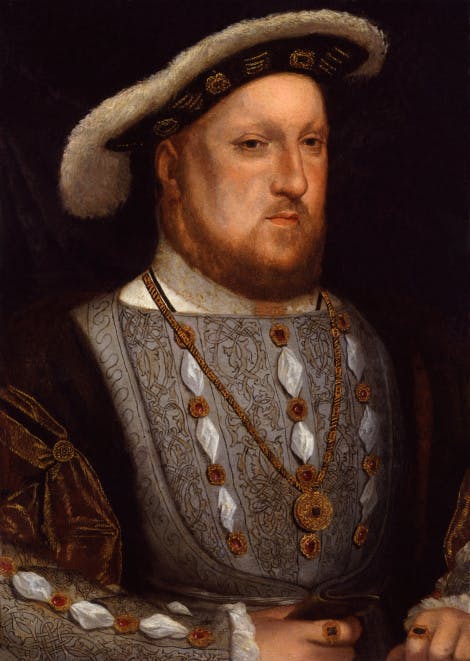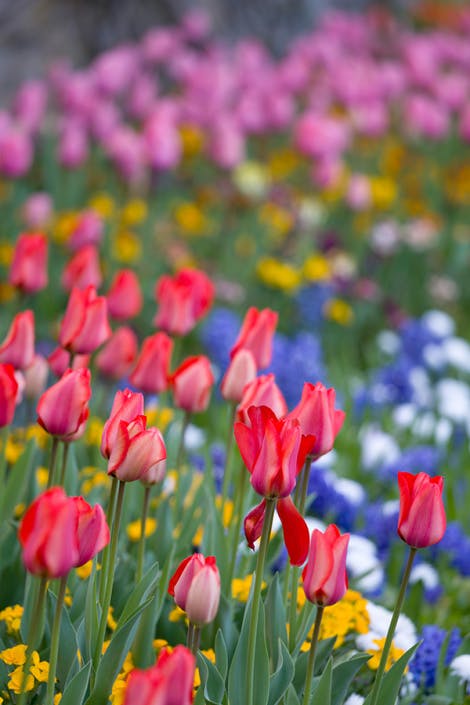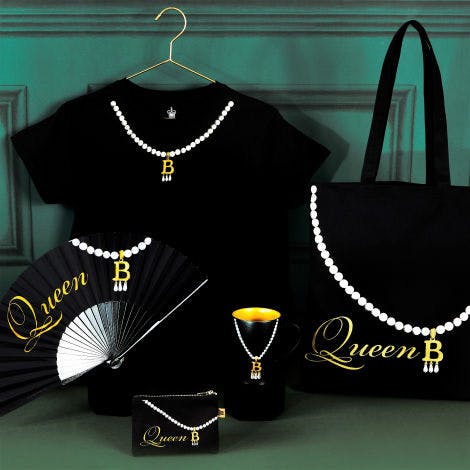
Explore an opulent Tudor pleasure ground in the inner precincts of Hampton Court Palace
Skip the event ticket details and go to event summary.
When
In line with palace opening hours
Ticketing information
Included in palace admission (Members go free)
Buy Hampton Court Palace ticketsThe garden in Chapel Court was created to mark the 500th anniversary of Henry VIII's accession to the throne, and evokes his court and the story of his reign.
The basis for the scheme is the garden depicted in The Family of Henry VIII (c1545), which hangs in the Haunted Gallery. This portrait shows a contemporary garden at Whitehall Palace, bristling with 'Kyngs beestes' perched upon lofty painted posts. The beasts are set in a garden criss-crossed by green and white painted post and rail fencing, encompassing beds sprinkled with herbs and flowers.
The planting incorporates alternating displays of herbs and flower varieties, which were available in England in the 16th century.
Tudor beasts
The designs of the beasts are based upon drawings produced in the early 16th century, now in the College of Arms, and their bright livery reflects the traditional Tudor heraldic colour schemes.
Each beast is carved in English oak and has a special significance in the iconography of Henry VIII.

A Tudor-inspired planting scheme
The choice of plants throughout the garden has been guided by an interest in creating a tapestry of fragrant, symbolic and utilitarian (apothecary) herbs and flowers that evoke the period, including:
- The white rose of York (Rosa x alba "Semiplena")
- Red rose of Lancaster (Rosa gallica officinalis)
- White iris (Iris florentina)
- Purple iris (Iris x germanica)
- Periwinckle (Vinca minor)
- Sweet william (Dianthus barbatus)
- Gilly flower (Matthiola incana)
- Mint (Metha)
- Madonna lily (lilium candidum)
- Violet (Viola odorata)
Some plants such as Broom or Greenweed (Genista tinctoria), Woad (Isatis tinctoria) and Dyers' Mignonette (Reseda luteola) are also included as they were commonly used for the production of 16th-century textile dyes.
The selection of plants is based on surviving records, including William Turner's 'A new herball, wherin are conteyned the names of herbes' (1551), and Gerard's 'Herball' (1597).
The borders of each of the beds are set with alternating rows of wild strawberries and sweet woodruff. The garden paths are laid with as-dug hoggin and crushed oyster shell paths.
Explore what's on

- Things to see
Great Hall
Experience the splendour of the Tudor court in Henry VIII's Great Hall, complete with his magnificent tapestries.
- Open
- In line with palace opening hours
- Hampton Court Palace
- Included in palace admission (Members go free)

- Things to see
The Chapel Royal
Walk in the footsteps of kings and queens in the Chapel Royal.
-
Open Wednesday - Saturday
- 10:00 - 16:00
- Hampton Court Palace
- Included in palace admission (Members go free)

- Things to see
The Rose Garden
Discover an abundance of colour in the grounds of the historic Tudor buildings at Hampton Court Palace.
- Open
- In line with palace opening hours
- Hampton Court Palace
- Included in palace admission (Members go free)
Browse more history and stories

Henry VIII, Terrible Tudor?
Who was the real Henry VIII?

The gardens at Hampton Court Palace
A brief history of the famous royal gardens

Historic hauntings at Hampton Court Palace
Centuries of ghosts and grim tales
Shop online

Antique Royal Cross Decoration
Handmade using traditional techniques this luxury jewelled cross decoration is an exquisite collectable ornament.
£13

Shop Anne Boleyn
Shop our collection of gifts and souvenirs, inspired by the Anne Boleyn and her infamous 'B' pendant necklace.
From £3.00

Shop Hampton Court Palace
Explore our gifts and souvenirs, inspired by over 500 years of history from Hampton Court Palace.
From £2.50
